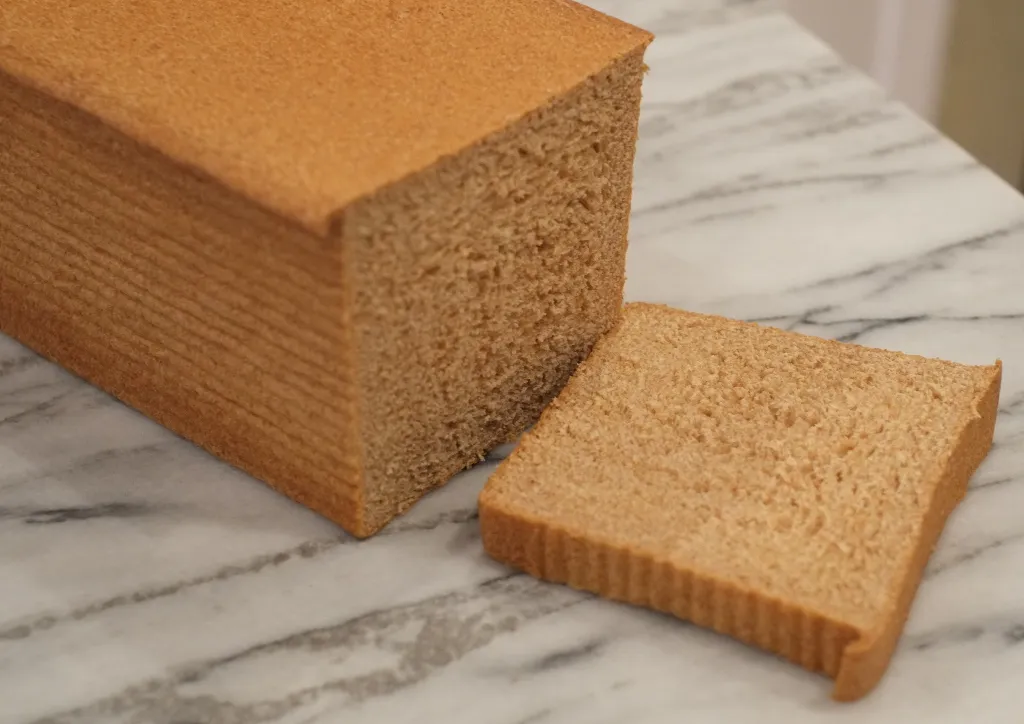
I'd like some confirmation that my method for calculating the calories in the breads I make is correct. It seems quite straightforward, but I want to make sure I'm not missing something.
I simply add up the calories of all of the individual ingredients. Then I divide the total ingredient calories by the total weight of all of the baked loaves after they have cooled. For basic sandwich type breads that contain fats, sugars, and maybe eggs, I generally end up with about 2.8 calories per gram of baked bread. Breads that contain only flour, water, and salt, such as french bread, generally yield around 2.27 calories per gram. For Hamelman's Olive Levain, I end up with 2.44 calories per gram.
The bread in the image is a 13x4x4 inch pullman loaf made using the [url=http://www.kingarthurflour.com/recipes/classic-100-whole-wheat-bread-recipe]Classic 100% Whole Wheat Bread[/url] recipe from the King Arthur Flour web site. I calculate 2.82 calories per gram of baked bread. The slice you see in the image weighed 59 grams; 166 calories if my calorie calculation method is correct. I usually cut a bit thinner, ending up with about 50 to 52 grams per slice, and a calorie count of 141 to 147 calories per slice.
Am I calculating the calories per gram correctly?
One reason I'm wondering is that the calorie burden I calculate for my breads doesn't compare very closely to the calorie counts listed for various types of bread on a calorie counting website. One site, for example, shows 100 grams of plain white bread having 266 calories, 2.66 calories per gram. Whole wheat bread is listed as 256 per 100 grams. That same site lists French Bread at 274 per 100 grams, which is a lot more than the 2.27 calories per gram that I always get.
The only thing that leaves bread when baking is water. Ingredient calories stay the same. Or are you dividing the total calories to find out the calorie per gram? If that is the case, you are correct.
The difference in your bread and others are obviously going to be ingredients, so it's difficult to say with sandwich breads and the like. Now for a lean bread, say french bread, hydration plays a big part. If you put more water in, it doesn't mean that there is not more in the finished bread, thus reducing the calorie percentage. I think if the site lists "French bread" that is sold in supermarkets it might even be slightly enriched.
Your method is a sound one and I have look at the data on purchased breads and ones I make. I tend to not be quite as precise as you and just use 27 cals per 10 grams of bread when tacking calories consumed. What kills me is I love the butter too and it really adds up fast.
deblacksmith
In Germany "Schamltz" is used on bread and in some brew pups it is even fournd on the table. True schamitz is rendered chicken fat used for both cooking and bread in Jewish cooking (I not Jewish so may not be completely correct here.) Schamltz as I have seen it in Germany is often lard and sometimes has bacon bits in it. Being lard this isn't really Jewish, but what my German friends called it.
deblacksmith